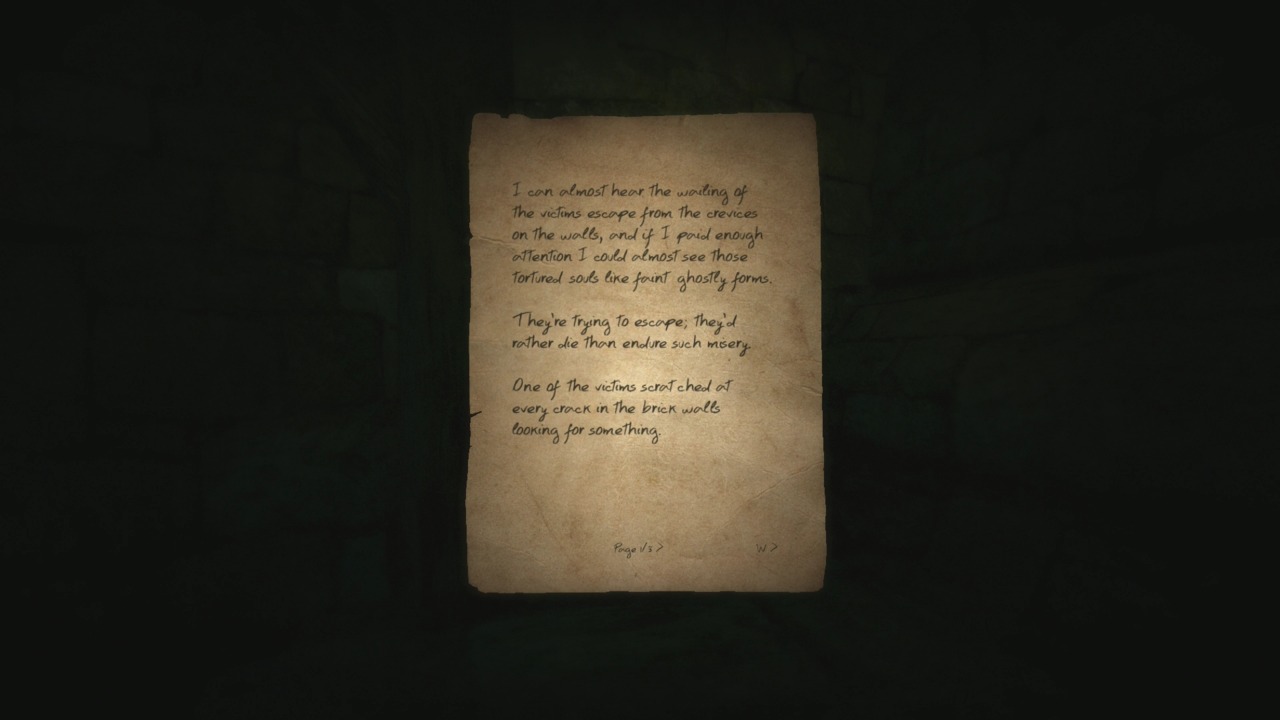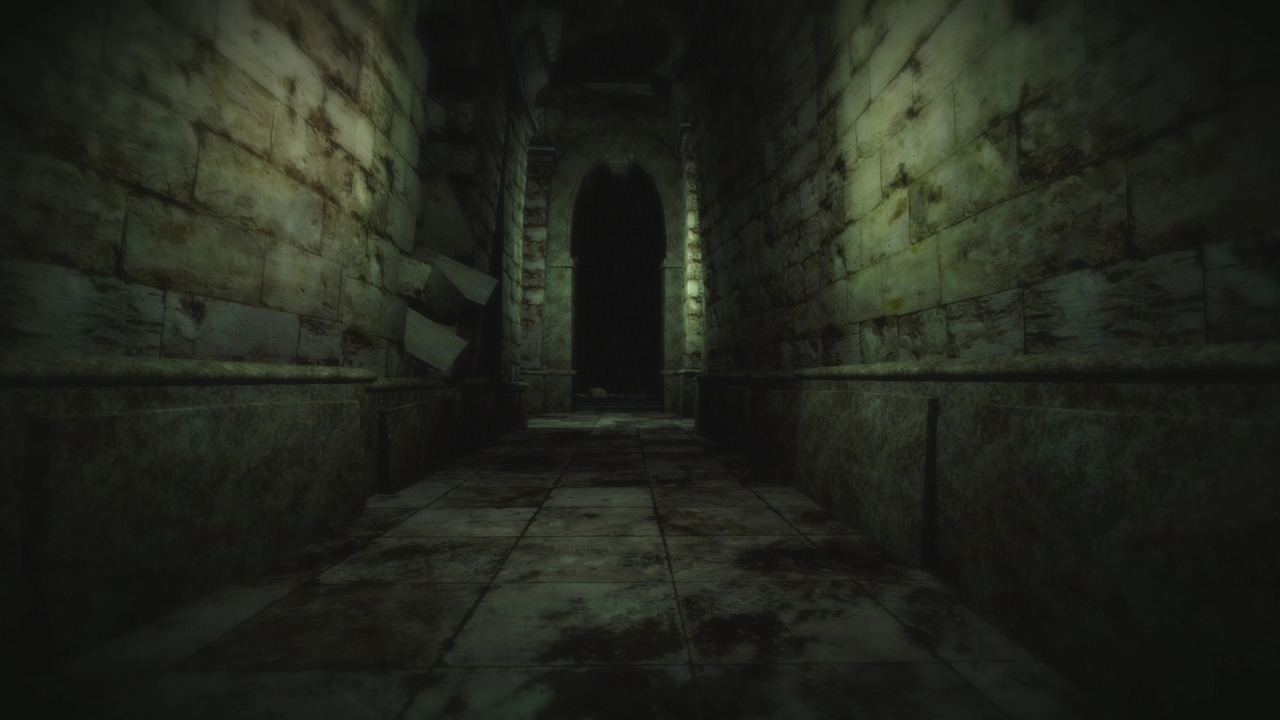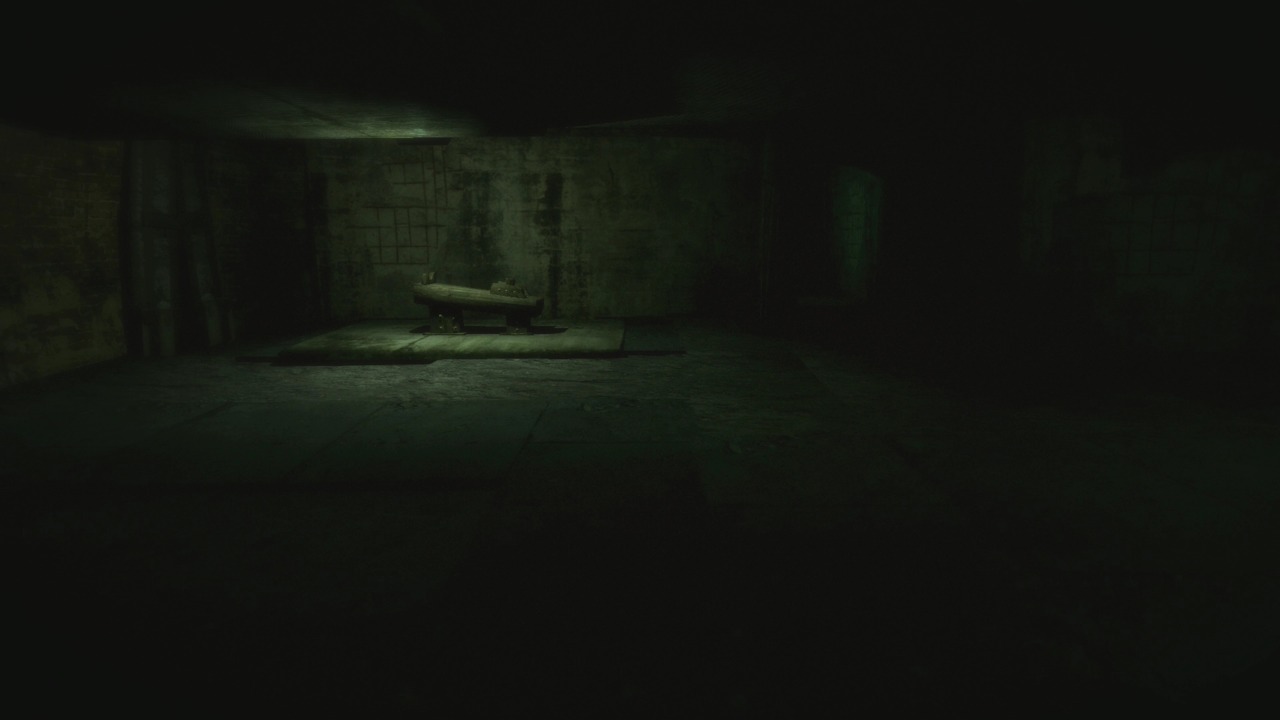"I couldn't believe he saw himself that way, but this place was governed by his rules, so I had to accept and try to survive at all costs."
The narrator of Doorways imparts this potentially heady information near the end of its second chapter--and the latest chapter of this episodic wannabe creepfest to be released. Most of the information you learn about your circumstances comes via pages you discover which your own character reads aloud, telling you his tale in an unwavering baritone. He tells you of murderers and dangers, evil contraptions and vengeful victims. He talks of tainted souls, poisoning curses, and grave suffering. Doorways wants so desperately to get into your head.
Sadly, Doorways is all talk.

The gameplay itself is shallow, which is no crime in a horror game in and of itself. You move through dark forest corridors and dark castle corridors in a first-person perspective, avoiding a few traps and collecting various objects so that you might in turn pull levers and activate switches. Slender: The Arrival and Amnesia: A Machine for Pigs are two recent examples of games that use such simplicity to their advantage. Horror isn't just about what you see on the screen or how you interact with the world, but also about the workings of your mind. The dark is frightening because you believe there's something lurking in it worth fearing.
Doorways is dark, at least, but forgot to fill the murk with anything to be afraid of. Its failure to evoke dread is best represented by an early trek you make across a series of boards, making precise leaps to avoid falling in the abyss beneath. A figure of a girl appears in front of you, stiff-straight, impeding your progress. Should you make contact with her, a high-pitched sound effect pierces the air, you see the gruesome girl's face up close, and you die--which means restarting at a checkpoint just seconds before that moment. A couple of such figures appear during this platforming segment, but they don't pursue you. They are simply screaming walls to avoid.

And so it goes with Doorways chapters 1 and 2, which assume that "being dark" is the same as "being atmospheric." If the screaming girls represented actual danger, or if Doorways had ramped up the tension before this sequence, your encounter with them might at the very least provide a good jump scare. But nothing you see or hear communicates the foreboding needed for a jump scare to work. The soundtrack's soft droning and occasional cymbal swipes are par for the course, but ambient noise is lacking. There are no quiet pitter-patters or vague moans to intimate any kind of malevolent presence or any lingering souls.
The art design is also too meager to communicate the cruelty you're meant to see on display. A few instruments of torture spread across otherwise brown and empty rooms does not a torture chamber make. The spaces you explore are more allegorical than physical, but even so, without detailed visual evidence of past terrors, Doorways is more like exploring a well-secured museum with the lights off than delving into the inner workings of psychopaths. The game makes a few mildly successful attempts with its visuals to evoke unease, with some brief flashbacks and sculptures in various disturbing poses standing out among them. But by and large, nothing you see or hear gets your pulse pounding, and the odd visual refreshes that occur when you walk into certain rooms distract from any potential buildup of tension.

This leaves the notes and voice-over to do all the work at getting you invested, but because the game's tone doesn't mirror the messages, the script comes off as a desperate attempt to convince you of Doorways' scariness. "How did they overcome the mortal chill that lurks in the darkness?" one note asks. "Their souls went astray and got lost forever in the shadows." The same note later adds, "They fled the place I'm entering." But the disparity between the richness of the writing and the hollowness of the adventure leaves you with a desire to explore the places the narrator is describing rather than the bland ones you're left with. The plot itself, a by-the-numbers look at bad people doing bad things, is left dangling without any interesting characterizations or background to embellish it.
The end of the second chapter introduces a few actual, sentient enemies, but it takes little more effort to avoid them than it does to sneak around those stationary girls that stand there, hoping you'll walk into them. Without gameplay to challenge you, horrific atmosphere to envelop you, or narrative worth uncovering, Doorways is dead in the water. Don't think of it as a horror game. Think of it as the simplest of first-person puzzle platformers in which someone forgot to turn on the lights.